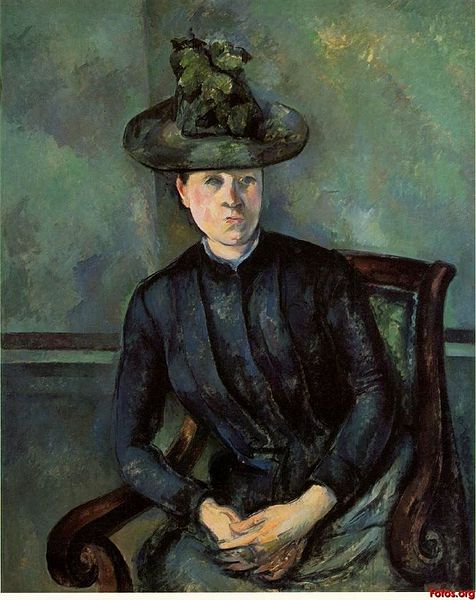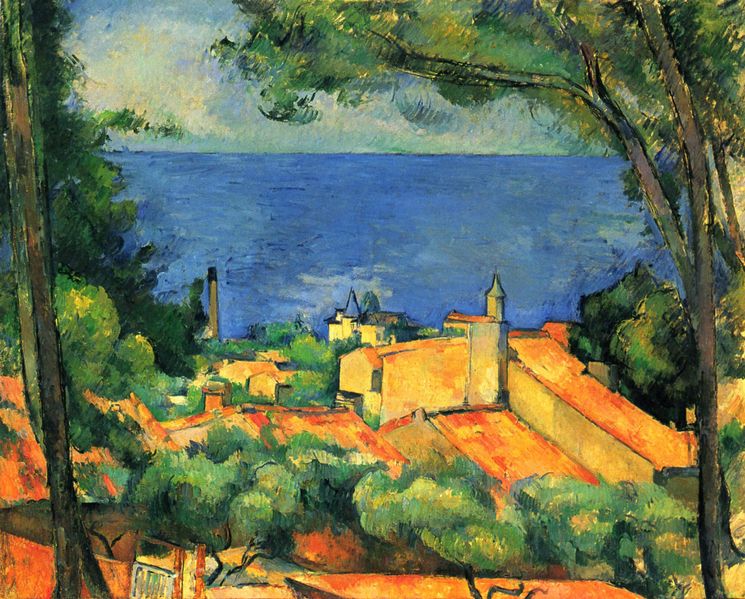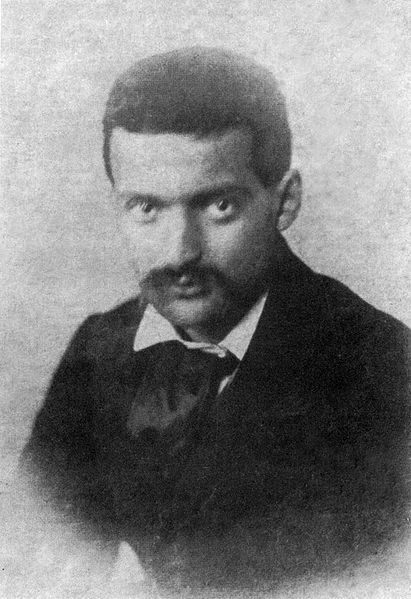| Famous Paintings by Cézanne | |
| Pyramid of Skulls | |
| The Bathers | |
| The Card Players | |
| The Basket of Apples | |
| Rideau, Cruchon et Compotier | |
| A Modern Olympia | |
| Complete Works |
Paul Cézanne was born on January 19, 1839 in the Aix-en-Provence, France. He was baptized February 22 in a local parish church. His dad was a well-to-do banker, and the family was very wealthy. He had two younger sisters, Marie and Rose, and they all attended the primary school near their home. At the age of ten, Paul entered St. Joseph’s boarding school, and studied drawing under a Spanish monk.
In 1852, Paul entered Collège Bourbon, and became friends with Émile Zola and Baptistin Baille. Paul was there six years. From 1859-1861, Cézanne attended law school at the University of Aix at his father’s wishes, but hated every moment of it. He left the school at the request of Zola, and went to Paris. His dad was furious with him, but he eventually supported his career choice.
Cézanne’s early art is landscapes, mainly from his imagination. His second phase of work, comes from direct observation, and includes more than just nature. His mature phase of work reduces everything to their basic geometric form. Paul once said, “Treat nature by cylinder, sphere, and cone.” When asked why he did this, he replied, “I want to make of Impressionism something solid and lasting like the art in the museums.”
His first exhibition of his artwork was at the Salon des Refusés in 1863, which shows all work rejected by the Paris Salon. There are only a few works of Paul’s that got into the Paris Salon, Portrait of Louis-Auguste Cézanne, Father of the Artist, reading ‘l’Evénement’, and that was because his friend bribed the judges to let them in. He exhibited twice with the Impressionists, once in 1874, and again in 1877. Around 1895, Ambroise Vollard, a patron to artists like Picasso and George Braque, set up a solo show for Cézanne. One of his most famous paintings, Still Life with Curtains, was displayed at this exhibit, and was the stepping stone for the rest on Cézanne’s work. This piece began the geometric reduction of all shapes.
Unlike other artists, Cézanne painted all subject matter: still lifes, landscapes, bathers, and things from his imagination. No matter what he painted though, Paul was a devout Catholic, and his religion influenced his work. “When I judge art, I take my painting and put it next to a God-made object like a tree of flower. If it clashes, it is not art.”
 Since the Franco-Prussian War started in 1870, all French citizens were required to register in the National Guard. Cézanne didn’t want to go to war, so he and his girlfriend left Paris for l’Estaque to avoid going to war. He was declared a draft dodger, but the war ended before he could be punished for it. They moved back to Paris in 1871. His girlfriend, Marie-Hortense Fiquet had a son, Paul, in January of 1872. His dad didn’t know about it. Six years later though, his dad did find out, and threatened to disown him for having a son out of wedlock. Instead, his dad started giving Paul 400 francs a month to support his family.
Since the Franco-Prussian War started in 1870, all French citizens were required to register in the National Guard. Cézanne didn’t want to go to war, so he and his girlfriend left Paris for l’Estaque to avoid going to war. He was declared a draft dodger, but the war ended before he could be punished for it. They moved back to Paris in 1871. His girlfriend, Marie-Hortense Fiquet had a son, Paul, in January of 1872. His dad didn’t know about it. Six years later though, his dad did find out, and threatened to disown him for having a son out of wedlock. Instead, his dad started giving Paul 400 francs a month to support his family.
In 1886, he finally married Marie. Unfortunately, his dad died shortly after. Paul was upset, but he inherited 400,000 francs, so he wasn’t too disappointed. Also that year, his friendship with Émile Zola ended, after she wrote a book, and the main character was based off Cézanne. In 1890, Cézanne was diagnosed with diabetes, which came as a shock for the artist. He kept painting, and produced another famous work in 1897, Mont Sainte-Victoire. The mountain is composed of many squares, and so is the forest at the base of it. There are numerous paintings of this mountain, for it was a calming and relaxing place for him to go paint en plein air.
 One day, Paul was caught in a storm while working in the field. After two hours of being in the rain, he decided it was time to go home. But, he collapsed on the way home, and some stranger saw him and helped him home. The next day, he tried to go outside, but ended up fainting. He was put to bed, and never left it again. Paul Cézanne died of pneumonia on October 22, 1906. He is buried at the old cemetery in his home town, Aix-en-Provence. The year after he died, a large retrospective was shown with all his work in commemoration for the artist.
One day, Paul was caught in a storm while working in the field. After two hours of being in the rain, he decided it was time to go home. But, he collapsed on the way home, and some stranger saw him and helped him home. The next day, he tried to go outside, but ended up fainting. He was put to bed, and never left it again. Paul Cézanne died of pneumonia on October 22, 1906. He is buried at the old cemetery in his home town, Aix-en-Provence. The year after he died, a large retrospective was shown with all his work in commemoration for the artist.
Even though Cézanne was painting during the Impressionist period, he was not an Impressionist himself. His art is considered to be part of the Post-Impressionism period, which includes artists like Van Gogh and Toulouse-Lautrec. The geometric figures are more modern and avant-garde then the light filled scenes of the Impressionists and his colors are often too dark and dreary. Impressionists painted scenes of daily life, scenes that are just meant to be a passing moment, rather than a picture for a lifetime. Still lifes, they stay in the same pose forever. People do not, making Cézanne one step ahead of the game, placing him in the Post-Impressionist period.
